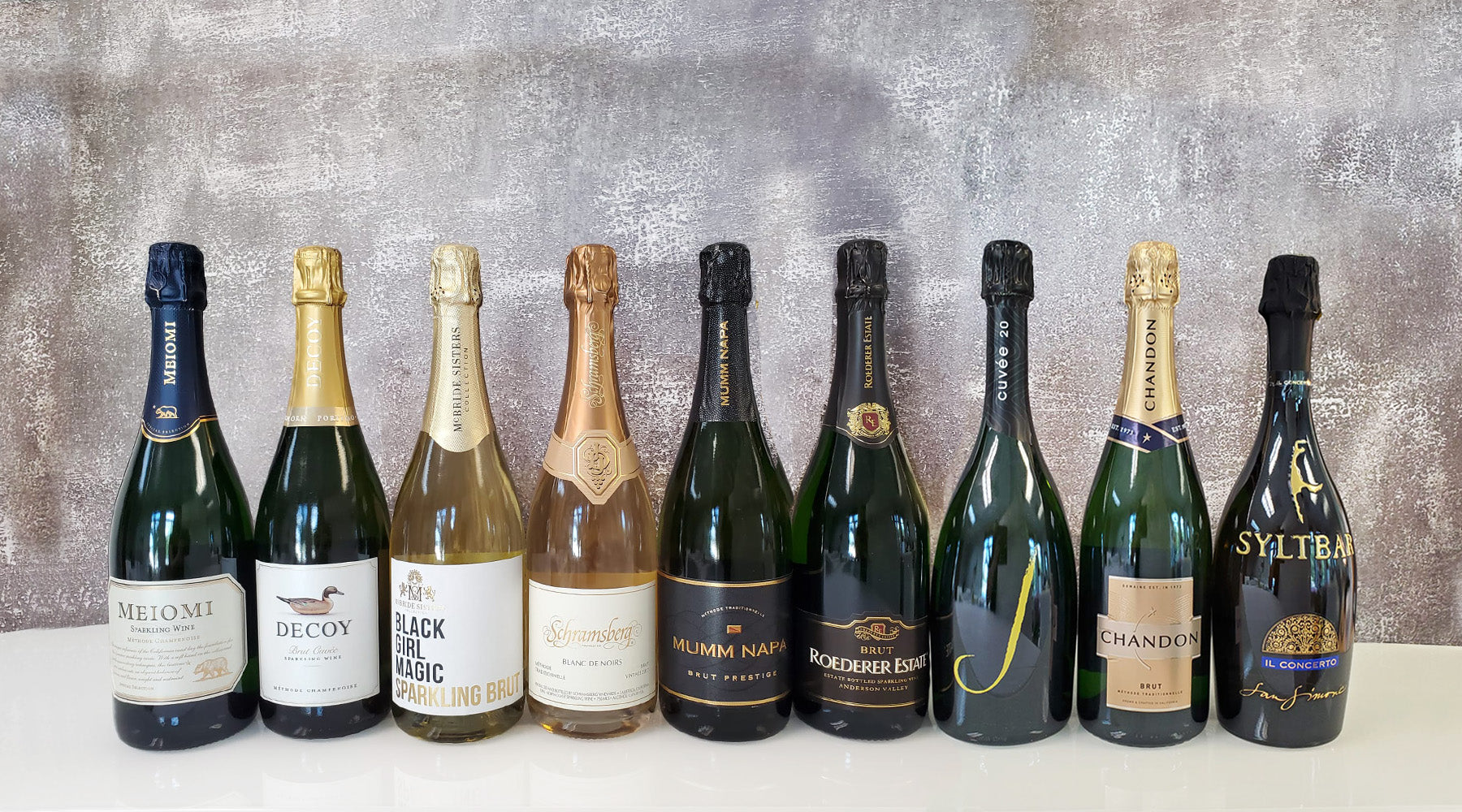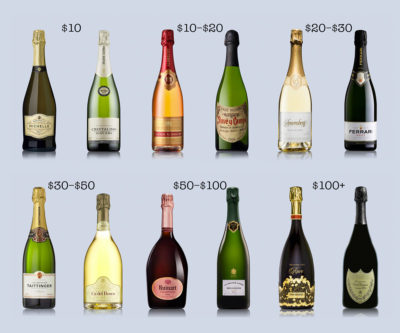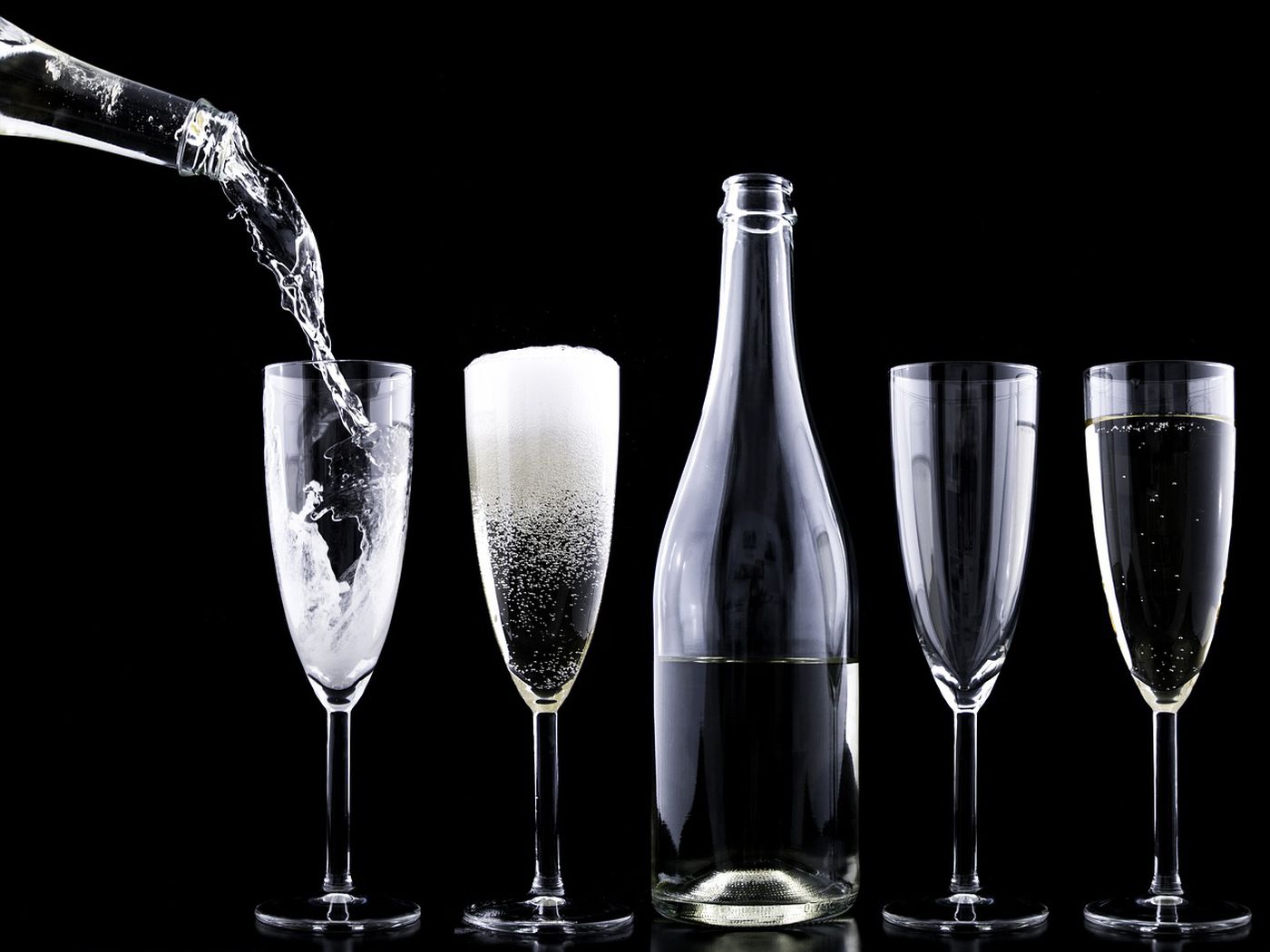Understanding Alcohol Content In Champagne

Understanding Alcohol Content in Champagne is essential for anyone who enjoys this sparkling beverage. Champagne typically contains an alcohol content between 11.5% and 12.5% ABV (Alcohol by Volume). Being aware of the strength of the specific brand or type of champagne you’re consuming is important for responsible drinking. The alcohol content in champagne may vary based on factors such as the grape variety, fermentation process, and aging techniques. By understanding the alcohol content, you can make informed choices and enjoy champagne in moderation for a delightful experience. Remember, responsible consumption is key when indulging in this celebratory drink.
Alcohol Content In Champagne: What It Means
Understanding the alcohol content in champagne is crucial for individuals looking to enjoy this sparkling drink responsibly. The alcohol content is stated as a percentage of alcohol by volume (ABV) and indicates the strength of the champagne. It informs consumers about the amount of alcohol they are consuming per serving. By knowing the alcohol content, individuals can make informed decisions about their alcohol intake, pace themselves accordingly, and adhere to responsible drinking practices. It’s essential to be aware of the alcohol content in order to fully enjoy the celebration while maintaining a safe and enjoyable experience.
Factors Influencing Alcohol Content In Champagne
Several factors can influence the alcohol content in champagne. One crucial factor is the choice of grape varieties used in the production process. Different grape varieties, such as Pinot Noir and Pinot Meunier, can have varying sugar levels, which ultimately impact the alcohol content. Additionally, the ripeness of the grapes plays a significant role. Grapes harvested at higher sugar levels result in a champagne with a higher alcohol content. These factors, along with others such as yeast selection and fermentation techniques, contribute to the unique alcohol content of each bottle of champagne.
Light And Breezy: Low Alcohol Champagne Options

Low alcohol champagne options are perfect for those who prefer a lighter and more refreshing style. These champagnes typically have a lower alcohol content, making them a great choice for casual sipping or day-time occasions. They are known for their delicate flavors and crisp acidity. Some popular low-alcohol champagne brands to try include Veuve Clicquot Rich, Laurent-Perrier Ultra Brut, and Ruinart Blanc de Blancs. These champagnes provide a delightful and enjoyable drinking experience while maintaining a lower alcohol content, allowing you to sip and savor without feeling overwhelmed.
Low Alcohol Champagne: Definition And Characteristics
Low alcohol champagne refers to sparkling wines with a lower alcohol content compared to traditional champagnes. These champagnes typically have an alcohol by volume (ABV) of around 9% to 11.5%. The lower alcohol content contributes to a lighter and more refreshing drinking experience. Low alcohol champagnes often exhibit delicate flavors and a crisp acidity. They are ideal for casual sipping or daytime occasions when a lighter and less alcoholic beverage is desired. These champagnes allow consumers to enjoy the effervescence and elegance of champagne while maintaining a lower alcohol intake.
Popular Low Alcohol Champagne Brands To Try
When it comes to low alcohol Champagne options, there are several popular brands that you should consider trying. One such brand is Laurent-Perrier Ultra Brut, known for its exceptional quality and delicate flavors. Another notable option is the Moët & Chandon Imperial, which offers a light and crisp taste with a lower alcohol content. Additionally, you may want to try Veuve Clicquot Rich, a refreshing Champagne with a touch of sweetness and a lower ABV. These brands provide a perfect balance between alcohol content and flavor, making them ideal choices for those seeking a lighter drinking experience. So, raise your glass and savor the effervescence of these popular low alcohol Champagne brands!
Full-bodied And Strong: High Alcohol Champagne Varieties

High alcohol Champagne varieties are known for their full-bodied and robust flavors. These types of Champagne typically have a higher alcohol content, ranging from 12.5% to 14% ABV. The higher alcohol content adds depth and intensity to the wine, creating a richer and more powerful taste. Champagne houses such as Bollinger, Krug, and Dom Pérignon are renowned for producing high alcohol varieties that showcase the complexity and depth of the Champagne region. These Champagnes are best enjoyed as standalone sips or paired with savory dishes that can stand up to their bold flavors.
High Alcohol Champagne: Exploring The Differences
High alcohol Champagne varieties stand apart from their counterparts with their bold and robust flavors. These Champagnes typically have a higher alcohol content, ranging from 12.5% to 14% ABV, compared to low alcohol options. The elevated alcohol levels contribute to a richer and more intense taste experience. High alcohol Champagnes showcase the complexity and depth of the Champagne region, offering a fuller-bodied and stronger profile. Champagne houses like Bollinger, Krug, and Dom Pérignon are known for producing exceptional high alcohol varieties that captivate wine enthusiasts. These Champagnes are best enjoyed on their own or paired with savory dishes that can match their intensity and boldness.
Notable High Alcohol Champagne Producers
Notable high alcohol Champagne producers include renowned Champagne houses such as Bollinger, Krug, and Dom Pérignon. These producers are known for their commitment to producing exceptional Champagnes with higher alcohol content. Bollinger, with their iconic “Special Cuvée,” offers a rich and intense Champagne experience with an alcohol content of around 12.5% ABV. Krug, known for their prestige cuvées, showcases the depth and complexity of high alcohol Champagnes, with some varieties reaching 12.5% to 14% ABV. Dom Pérignon, a symbol of luxury, crafts high alcohol Champagnes with exceptional aging potential and flavors that captivate enthusiasts. These Champagne producers continue to push boundaries and deliver extraordinary wines that showcase the region’s heritage and expertise.
Health Implications Of Alcohol Content In Champagne

Alcohol content in Champagne, like any alcoholic beverage, has health implications that should be considered. Consuming excessive amounts of Champagne can lead to various health problems, including liver damage, cardiovascular issues, increased risk of certain cancers, and alcohol dependency. It is important to drink Champagne in moderation and be aware of the alcohol content. The recommended guidelines for moderate drinking suggest up to one glass of Champagne per day for women and up to two glasses per day for men. It is always advisable to prioritize your health and practice responsible drinking habits.
Alcohol Content In Champagne And Its Effects On Health
Excessive consumption of alcohol in Champagne can have detrimental effects on health. The high alcohol content can lead to liver damage, cardiovascular issues, an increased risk of certain cancers, and the development of alcohol dependency. It is crucial to drink Champagne in moderation and be aware of the alcohol content. Following recommended guidelines for moderate drinking, which suggest up to one glass per day for women and up to two glasses per day for men, can help minimize the health risks associated with alcohol consumption. Prioritizing one’s health and practicing responsible drinking are essential.
Moderation And Responsibility When Consuming Champagne
Moderation and responsibility are essential when consuming Champagne. The high alcohol content in Champagne can have negative effects on health if consumed excessively. It is important to be mindful of one’s consumption and adhere to recommended guidelines for moderate drinking. Women should limit their intake to one glass per day, while men can have up to two glasses. By practicing moderation, individuals can enjoy the celebration and elegance of Champagne while minimizing the risks associated with excessive alcohol consumption. It is important to prioritize one’s health and make responsible choices when enjoying Champagne.
Champagne Cocktails: Mixing With Various Alcohol Content

Champagne cocktails offer a versatile and exciting way to enjoy the bubbly beverage while adding a twist of different alcohol content. Whether you prefer low alcohol options or want to experiment with higher proof spirits, there’s a champagne cocktail for everyone. Mixing champagne with various spirits like vodka, gin, or liqueurs can create a delightful blend of flavors. However, it’s important to choose the right proportions to maintain the balance and effervescence of the champagne. By exploring different recipes and practicing moderation, you can elevate your champagne experience and create refreshing cocktails for any occasion.
Creating Champagne Cocktails With Different Alcohol Content
Creating Champagne cocktails with different alcohol content offers a world of exciting possibilities. By mixing champagne with various spirits like vodka, gin, or liqueurs, you can create unique and flavorful concoctions. For a lighter option, try a Champagne Spritzer with soda water and a splash of your favorite fruit liqueur. For a stronger cocktail, a Classic Champagne Cocktail with brandy and a sugar cube soaked in bitters is a perfect choice. Remember to experiment with different proportions to find the perfect balance and enhance the effervescence of the champagne. Cheers to exploring the world of Champagne cocktails!
Best Practices For Mixing Champagne In Cocktails
When it comes to mixing Champagne in cocktails, there are a few best practices to follow. First, make sure to chill your Champagne before using it in a cocktail. This will help retain the bubbles and keep the drink refreshing. Additionally, when combining Champagne with other ingredients, add the Champagne last to preserve its effervescence. Avoid vigorous stirring or shaking, as this can cause the Champagne to go flat. Finally, garnish your Champagne cocktails with fresh fruits or herbs to enhance the flavors and add an elegant touch. Cheers to creating delightful Champagne cocktails!
Conclusions And Recommendations

In conclusion, understanding the alcohol content in champagne is essential for making informed choices while enjoying this bubbly beverage. Whether you prefer low alcohol options for a light and refreshing experience or high alcohol varieties for a more intense flavor profile, there is a champagne to suit every taste. It is important to consume champagne in moderation and be responsible when enjoying cocktails with varying alcohol content. When selecting champagne, consider the occasion and pair it with food to enhance the overall experience. Remember, a toast with champagne is a celebration of joy and should be enjoyed responsibly.
Choosing The Right Champagne Based On Alcohol Content
When selecting a bottle of Champagne, it is crucial to consider the alcohol content to suit your preferences and the occasion. If you prefer a lighter and more refreshing experience, opt for low alcohol Champagne varieties. These options typically have an alcohol content of around 11.5% ABV or lower. On the other hand, if you enjoy a richer and more intense flavor profile, high alcohol Champagne varieties are the way to go. These can range from 12.5% ABV and higher. By understanding the alcohol content in Champagne, you can make an informed choice that aligns with your desired taste and drinking experience.
Pairing Champagne With Food And Occasions For A Delightful Experience
When it comes to pairing Champagne with food, the effervescence and acidity make it a versatile choice that complements a variety of dishes. For a classic pairing, Champagne pairs well with seafood like oysters, caviar, and sushi. Its crispness also pairs well with light appetizers, such as cheese and charcuterie. When it comes to occasions, Champagne is the go-to choice for celebrations like weddings, anniversaries, and New Year’s Eve. Its elegant bubbles and luxurious taste create a delightful experience that adds a touch of glamour to any special moment.
FAQ About Alcohol Content In Champagne: Bubbly Strengths
Q: What is the typical alcohol content in Champagne?
A: The typical alcohol content in Champagne ranges from 11.5% to 12.5%.
Q: Can Champagne have higher alcohol content than 12.5%?
A: Yes, some Champagnes, especially those labeled as “Extra Brut” or “Brut Nature,” can have alcohol content exceeding 12.5%.
Q: How does the alcohol content in Champagne affect its taste and bubbles?
A: The alcohol content can impact the body and perceived sweetness of the Champagne. Higher alcohol content may contribute to a richer mouthfeel and more significant warming sensation.
Q: Is there a correlation between alcohol content and Champagne’s aging potential?
A: Generally, higher alcohol content can contribute to a Champagne’s aging potential as it provides more structure and stability to the wine.
Q: Are there Champagne varieties with lower alcohol content available?
A: Yes, there are Champagnes labeled as “Demi-Sec” or “Sec” that have lower alcohol content, usually around 11%, to balance the sweetness in the wine.
Q: How can consumers determine the alcohol content of a specific Champagne bottle?
A: Consumers can usually find the alcohol content specified on the label of the Champagne bottle, expressed as a percentage by volume.
Q: Does higher alcohol content necessarily mean better quality in Champagne?
A: Not necessarily. The quality of Champagne is determined by various factors, including grape quality, winemaking techniques, and aging processes, rather than just the alcohol content.
